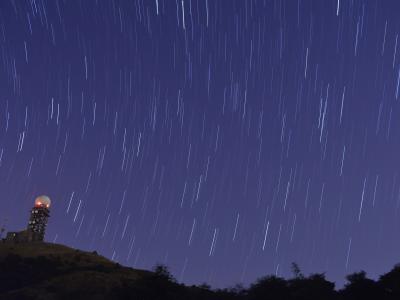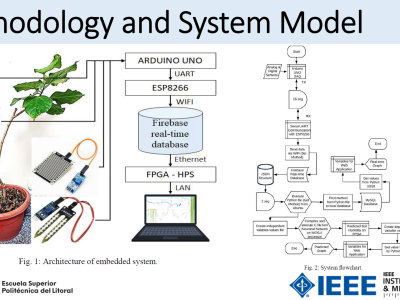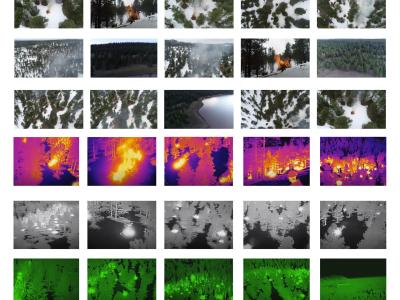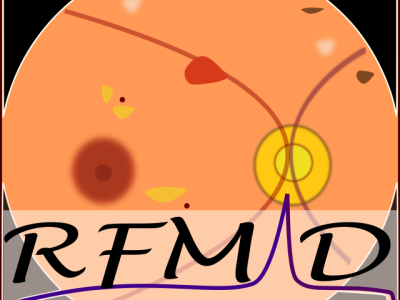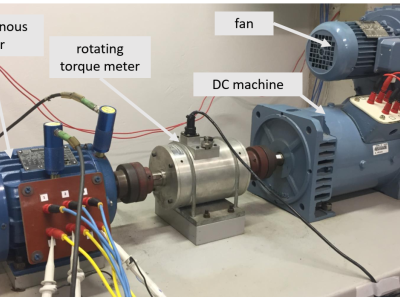Neuromorphic Digital-Twin-based Controller for Indoor Multi-UAV Systems Deployment
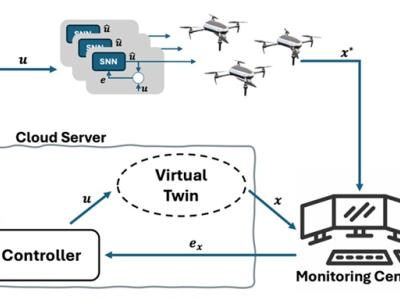
- Citation Author(s):
-
Reza AhmadvandSarah Sharif
- Submitted by:
- Yaser Banad
- Last updated:
- DOI:
- 10.21227/5r1v-3423
- Data Format:
Abstract
Presented study introduces a novel distributed cloud-edge framework for autonomous multi-UAV systems that combines the computational efficiency of neuromorphic computing with nature-inspired control strategies. The proposed architecture equips each UAV with an individual Spiking Neural Network (SNN) that learns to reproduce optimal control signals generated by a cloud-based controller, enabling robust operation even during communication interruptions. By integrating spike coding with nature-inspired control principles inspired by Tilapia fish territorial behavior, our system achieves sophisticated formation control and obstacle avoidance in complex urban environments. The distributed architecture leverages cloud computing for complex calculations while maintaining local autonomy through edge-based SNNs, significantly reducing energy consumption and computational overhead compared to traditional centralized approaches. Our framework addresses critical limitations of conventional methods, including the dependency on pre-modeled environments, computational intensity of traditional methods, and local minima issues in potential field approaches. Simulation results demonstrate the system's effectiveness across two different scenarios. First, the indoor deployment of a multi-UAV system made-up of 15 UAVs. Then the collision-free formation control of a moving UAV flock including 6 UAVs considering the obstacle avoidance. Owing to the sparsity of spiking patterns, and the event-based nature of SNNs in average for the whole group of UAVs, the framework achieves almost 90% reduction in computational burden compared to traditional von Neumann architectures implementing traditional artificial neural networks.
Instructions:
Indoor Deployment Case Study
To implement the MATLAB CODE for Case Study 1 we have the following steps:
1) Run the MATLAB script file named” SNN_based_dynamics_noobs.m” located in the folder named” Deployment Scenario/Codes”.
2)
In the MATLAB code named” SNN_based_dynamics_noobs.m” you can change the following parameters:
Line 18) NOA: the number of UAVs that can be changed to any number less than 10.
Line 19) NON: the number of neurons in each SNN which scales the networks
Line 20) Snum: the number of sampling points in Lloyd’s algorithm
Line 21) Iteration: iteration time of Lloyd’s algorithm
Formation Control Case Study
To implement the MATLAB CODE for Case Study 2 we have the following steps:
3) Run the MATLAB script file named” Satatic_obs.m” located in the folder named” Formation Control Scenario/Codes”.
In the MATLAB code named” dynamics_noobs.m” you can change the following parameters:
Line 20) NOA: the number of UAVs that can be changed to any number less than 10.
Line 21) Snum: the number of sampling points in Lloyd’s algorithm
Line 22) Snum: the number of sampling points in Lloyd’s algorithm
Line 23) Iteration: iteration time of Lloyd’s algorithm
Line 97) FOV_theta: UAVs field of view can be changed to any number between 0 to 180 deg.
Notice: to get the relative distance history for any UAV you just need to put the number of desired UAV equal to the j in the if statement in Line 298 of code.
 211 views
211 views


